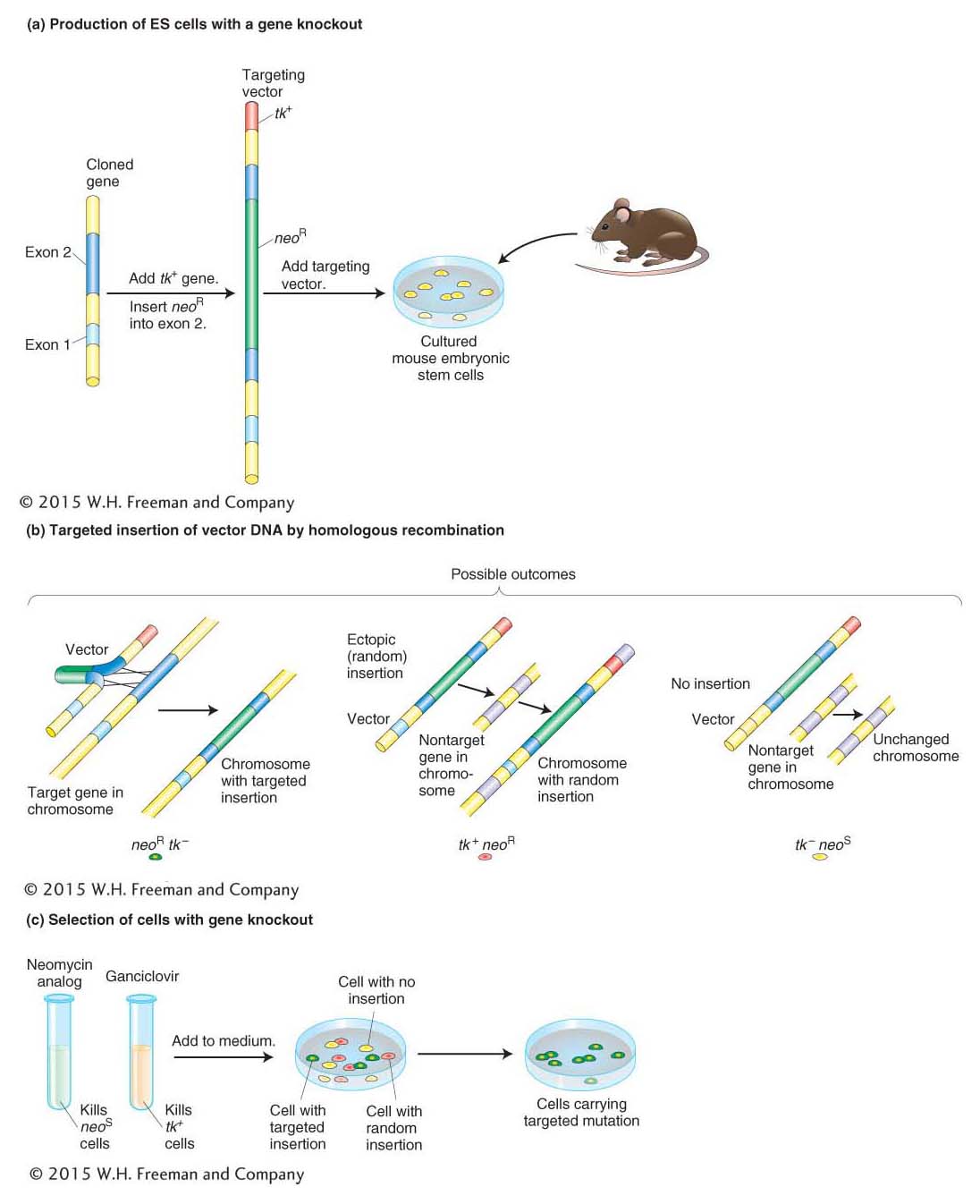
Producing cells that contain a mutation in one specific gene, known as a targeted mutation or a gene knockout. (a) Copies of a cloned gene are altered in vitro to produce the targeting vector. The gene shown here was inactivated by the insertion of the neomycin- n- s—